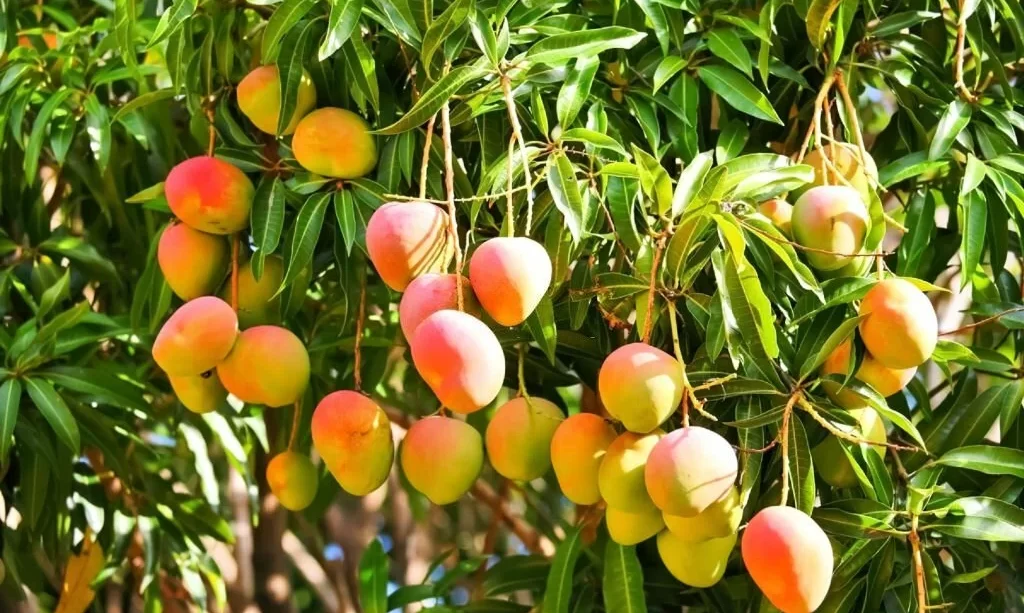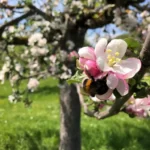Mango trees, renowned for their sweet and succulent fruit, have long been a symbol of exotic tropical landscapes. These lush trees evoke images of sun-soaked orchards with branches heavy with the king of fruits, the mango. Yet, beneath the allure of their delicious produce lies a question that has intrigued many: Are mango trees evergreen? In this exploration, we delve into the intriguing world of mango trees to uncover the mystery of their foliage. By understanding the basics of mango tree biology and their relationship with changing seasons, we aim to demystify whether they are truly evergreen or if their leaves also change with the turning of the seasons.
- Proper watering and lighting are the most important components of plant care, but humidity and temperatures also play a role. The trick is to try to mimic the climate of the place that plant came from. Tropical plants thrive in warm, humid environments, while cacti and succulents prefer hot, dry climes.
- The plants are fully grown, their leaves, their strong stem and roots are in excellent condition.
- Even some types of plants you can see even flowers, sometimes the leaves fall due to the stress of the trip but they will recover quickly.
- Our plants are certified healthy and pest free. inspected by Department of Agriculture of the United States of America Are inspected and released.
Mango Tree Basics
To comprehend the nature of mango trees, it’s essential to start with the basics. Mango trees (Mangifera indica) belong to the Anacardiaceae family and are native to South Asia. These trees are known for their lofty stature, with some varieties reaching up to 100 feet in height. They are valued not only for their delectable fruit but also for their extensive root systems and vibrant foliage.
Mango trees are classified as either “evergreen” or “semi-evergreen” due to their leaf-shedding patterns. In regions with consistent warmth and tropical climates, they can maintain their vibrant green leaves throughout the year, thus earning the label “evergreen”. However, in areas with distinct seasons, mango trees exhibit a semi-evergreen habit by shedding some leaves during specific times of the year, particularly during a dry season or cooler temperatures.
Understanding these fundamental characteristics sets the stage for unraveling the mystery of mango tree foliage and determining whether they are truly evergreen or subject to seasonal changes.
Evergreen or Not: The Mango Tree’s Leaf Cycle
The question of whether mango trees are evergreen or deciduous revolves around their leaf cycle. In regions with a stable, warm climate, mango trees can indeed be evergreen. This means that they maintain their lush green foliage year-round, providing a consistent canopy of leaves. However, even in tropical regions, mango trees may exhibit a degree of seasonality. These trees can be described as semi-evergreen since they might shed a portion of their leaves during certain periods.
The leaf-shedding pattern of mango trees is closely tied to environmental factors, which include rainfall, temperature, and the tree’s growth cycle. The transition from semi-evergreen to deciduous is more prominent in regions with distinct wet and dry seasons. During the drier, cooler months, mango trees may drop some leaves, which aids in conserving moisture and energy. As the seasons change and conditions become more favorable, new growth and leaves return, lending a semblance of evergreen appearance.
The Role of Climate
Climate plays a pivotal role in the deciduous or evergreen nature of mango trees. In regions with a consistently tropical climate characterized by high temperatures and abundant rainfall throughout the year, mango trees often maintain their evergreen status. The combination of warmth and moisture provides an environment conducive to continuous leaf growth, allowing these trees to flaunt their greenery regardless of the season.
However, in areas with more pronounced seasonality, particularly those that experience dry and cool periods, mango trees may temporarily shed their leaves. During these times, conserving energy and water becomes paramount for the tree’s survival. By dropping some of its leaves, the mango tree reduces transpiration and nutrient demand, which helps it endure the less hospitable conditions.
Frost and extreme cold temperatures can also influence the deciduous nature of mango trees. In regions where the mercury drops significantly, mango trees may lose their leaves to protect themselves from cold injury. In such climates, the transition from evergreen to deciduous is a survival mechanism that enables mango trees to weather the challenging winters.
So, the role of climate is undeniably significant in determining whether mango trees maintain their evergreen charm or temporarily shed their leaves to adapt to changing environmental conditions.
Deciphering the Mystery: Mango Trees Worldwide
The deciduous or evergreen behavior of mango trees isn’t a universal constant. It varies significantly from one region to another. In tropical and subtropical regions with relatively consistent warmth and rainfall, mango trees tend to maintain their evergreen character, offering a constant canopy of leaves. In these areas, you can expect the vibrant green foliage to persist throughout the year, making it easy to classify mango trees as evergreen.
However, the story changes in regions with distinct seasons, especially where wet and dry periods alternate. Mango trees adapt to the environment by exhibiting semi-evergreen behavior, shedding some leaves during less favorable conditions to conserve resources. Such regions witness the temporary transition from evergreen to deciduous, offering a glimpse of the tree’s adaptability in the face of changing environmental factors.
The Verdict on Mango Trees
So, are mango trees evergreen or deciduous? The verdict is that mango trees exhibit both behaviors, depending on their location and the climate they inhabit. In areas with a consistent tropical climate, mango trees proudly maintain their evergreen appearance year-round. Their lush canopy of leaves provides shade, beauty, and, of course, delicious fruit.
In contrast, regions with a more pronounced seasonal variation can witness mango trees shedding a portion of their leaves during the dry or cooler months. This is not a sign of an ailing tree but rather a survival strategy. It allows the tree to minimize moisture loss and conserve energy until more favorable conditions return.
Conclusion
The mystery of whether mango trees are evergreen or deciduous is rooted in the diversity of our planet’s climates. These trees exhibit remarkable adaptability, showcasing both behaviors as they respond to their surroundings. Understanding the deciduous nature of mango trees doesn’t diminish their beauty or significance. Instead, it highlights the dynamic and resourceful ways in which nature’s wonders navigate the challenges presented by different environments.
Mango trees, whether evergreen or deciduous, continue to provide us with not only delectable fruit but also valuable lessons in resilience and adaptation. As we savor the taste of a ripe mango, we can also savor the wisdom of the tree that produces it, reminding us of the fascinating complexity of the natural world.




